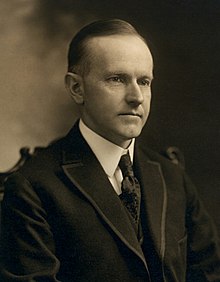📖 Presidential Profile
Comprehensive overview of leadership, policies, and historical significance
📋 Biography & Political Journey
The Unlikely Path to Power
Calvin Coolidge’s rise to the presidency began with his strong response to the **Boston Police Strike** of 1919 as Massachusetts governor, when he declared that “there is no right to strike against the public safety by anybody, anywhere, any time.” This decisive action made him a national figure and led to his selection as Warren G. Harding’s running mate in 1920. When Harding died suddenly in 1923, Coolidge was **sworn in by his father**, a notary public, by lamplight in his family’s Vermont farmhouse – one of the most humble presidential inaugurations in American history.
The Business of America is Business
Coolidge’s presidency epitomized the pro-business sentiment of the 1920s, with his famous declaration that **”the business of America is business.”** His administration pursued policies of tax reduction, debt reduction, and regulatory restraint that contributed to the economic boom of the Roaring Twenties. Under Treasury Secretary Andrew Mellon, the administration cut taxes on wealthy Americans while maintaining high tariffs to protect domestic industries. This approach, combined with technological innovations and consumer credit expansion, fueled unprecedented prosperity and stock market growth.
Foreign Policy and Isolationist Principles
Coolidge maintained America’s isolationist stance while supporting international economic cooperation and disarmament efforts. His administration participated in the **Washington Naval Conference** agreements and supported the Kellogg-Briand Pact outlawing war. The **Dawes Plan** for German reparations payments helped stabilize European finances while protecting American business interests. Coolidge resisted calls for American participation in the World Court and maintained high immigration restrictions, reflecting the nationalist sentiment of the 1920s.
The Silent Treatment and Political Style
Coolidge’s **laconic speaking style** and reluctance to engage in political rhetoric earned him the nickname “Silent Cal,” but this approach often frustrated both allies and opponents who found him difficult to read. His **refusal to campaign actively** for the 1928 Republican nomination surprised many who expected him to seek a full term, stating simply “I do not choose to run.” Critics argued that his passive leadership style and faith in business self-regulation contributed to the speculative excesses that led to the 1929 stock market crash. His belief that “the government that governs least governs best” seemed increasingly outdated as economic problems mounted in his final years.
The Mechanical Horse Incident
Despite his serious public image, Coolidge had a mischievous sense of humor that occasionally surfaced in the White House. He once **rode a mechanical horse** installed in his bedroom for exercise while wearing a business suit and his characteristic stern expression, creating a bizarre sight that left staff members uncertain whether to laugh or maintain their composure. The president also enjoyed **pressing all the buttons** on his desk simultaneously to summon various staff members, then hiding behind his desk to watch them arrive confused and wondering why they’d been called. When asked about this behavior, Coolidge reportedly said with a straight face, “**A man must have his amusements.”**
Humor & Jokes
Roaring Twenties
Coolidge presided over the Roaring Twenties while staying completely silent. He was like the quiet…
Read More →Greatest Wins
🕊️ Kellogg-Briand Pact Ratification
America joined 60 nations in renouncing war as foreign policy, marking a historic step toward…
Read More →Epic Fails
📉 Excessive Deregulation and Stock Market Speculation Enabling
Coolidge's extreme laissez-faire policies and deregulation created dangerous economic bubbles that contributed to the conditions…
Read More →